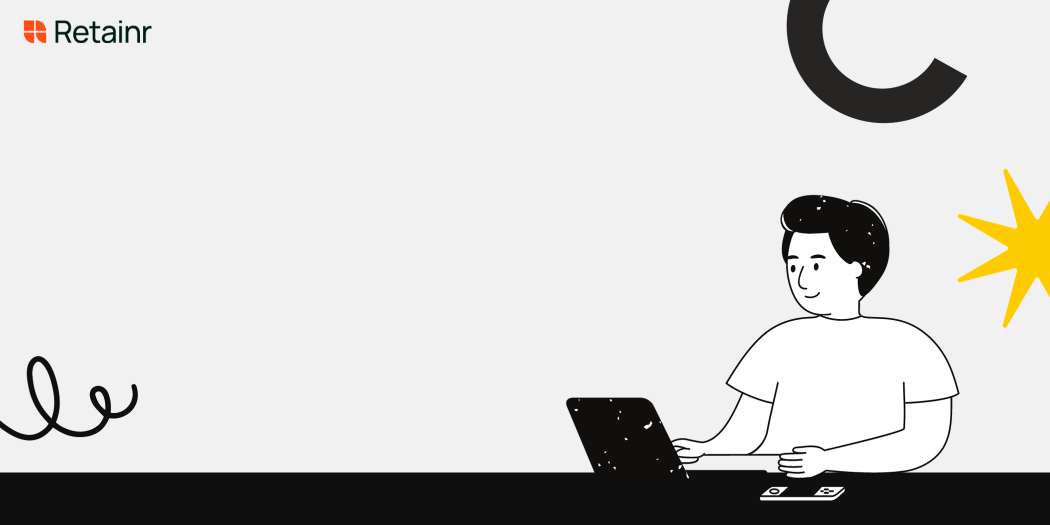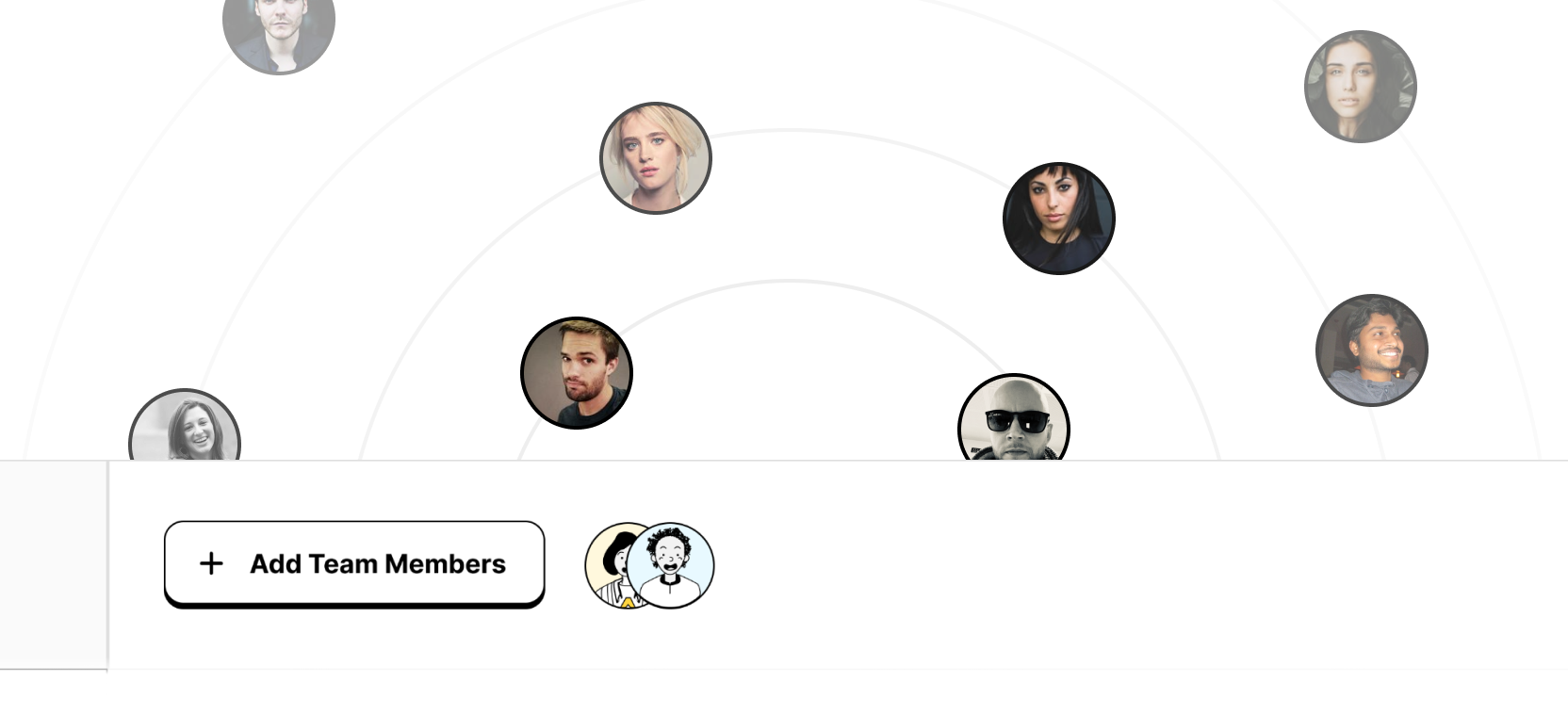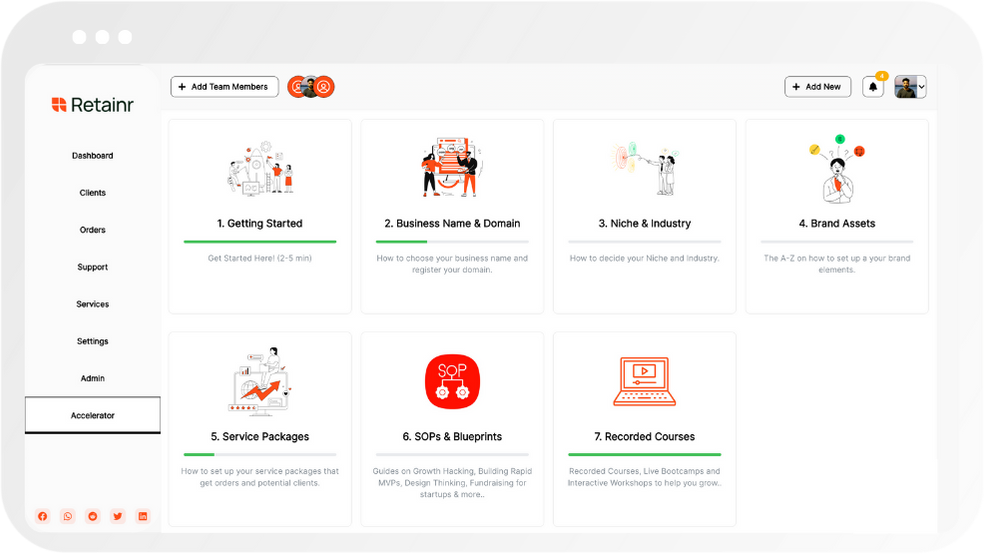
10 Hacks for Managing a Remote Team effectively
Build with Retainr
Sell your products and services, manage clients, orders, payments, automate your client onboarding and management with your own branded web application.
Get Started1. What are the top hacks for managing a remote team effectively?
Efficient Communication Tools
The key to effective remote team management lies in smooth and efficient communication. Therefore, using robust communication tools is an indispensable hack. Examples include Slack for instant messaging and project discussions, Zoom for video conferencing, Trello or Asana for project management and task assignment.
These communication tools bridge the gap created by distance and help maintain a collaborative environment. However, managers must ensure that these tools are not becoming a source of distraction. Schedule specific 'no interruption' hours where team members can focus solely on their tasks without constant message notifications.
Regular Check-ins and Feedback
Managing a remote team also requires regular check-ins and constant feedback. Managers should set up daily or weekly meetings depending on the nature of the work. During these check-ins, managers can discuss the progress of tasks, address any challenges the team is facing, and provide constructive feedback.
These check-ins can be summarized in a table like the following:
| Day | Agenda | Outcome |
|---|---|---|
| Monday | Task allocation and set priorities for the week | Team is clear about the week's targets |
| Wednesday | Mid-week check on progress and address any roadblocks | Ensure smooth progress of tasks |
| Friday | Week's wrap-up, assess completed tasks and set agenda for the next week | Keep the team on the same page for upcoming tasks |
Building Trust and Fostering Ownership
Lastly, when managing a remote team, building trust, and fostering ownership is essential. Trust can be established by setting clear expectations and giving autonomy to the team. This way, team members feel valued and display a higher commitment to their duties. Furthermore, promoting a culture where mistakes are considered as opportunities for learning also helps build a supportive work environment.
2. How can I improve communication with my remote team?
Effective Communication Strategies
Effective communication is a pillar of successful remote team management. One of the simplest ways to improve communication with your remote team is by using the right tools. Platforms like Slack, Zoom, or Microsoft Teams can be instrumental in facilitating real-time communication, creating team chats, and conducting virtual meetings. Additionally, project management tools like Trello, Asana and Basecamp can help keep everyone on the same page regarding tasks and deadlines.
Staying in Regular Contact
Maintaining regular contact is crucial when managing a remote team. This can involve daily check-ins, weekly team meetings, and one-on-one sessions. It's also a good idea to foster a culture of open communication, encouraging team members to share their ideas and concerns. However, remember that communication isn’t only about work. Touch base with your team members about their personal lives too. Build rapport and strengthen relational bonds within the team by holding virtual team-building activities, coffee chats or after-work hangouts.
Effective Communication Guidelines
Just as important as regular communication are the guidelines that define how communication should occur. It's beneficial to establish practices that ensure effective interaction within the team. This could include:
- Having set 'reply-by' expectations for different types of communication
- Defining certain 'quiet hours' where no one is expected to respond immediately
- Encouraging the use of 'status' on communication platforms to indicate availability
| Guideline | Example |
|---|---|
| Reply-by Expectation | Reply to queries within 24 hours |
| Quiet Hours | No work-related messages between 8pm and 8am |
| Status Indication | Using a 'busy' status when you're in a meeting |
3. What are some ways to build team cohesion when everyone works remotely?
Building a Cohesive Team Environment Remotely
Building team cohesion can be more challenging when everyone works remotely. However, there are several effective strategies that can help create a strong, unified team even when members are geographically dispersed. Inclusion in decision making, regular team meetings and promoting healthy communication channels are among the key ways.
- Inclusion in decision making: Involve every team member in the decision-making process. Make use of collaborative tools such as Trello, Asana or Google Workspace where everyone can share their thoughts, feedback, and suggestions. This practice not only fosters a sense of investment in the team but also improves the quality of decisions.
- Regular team meetings: Schedule regular virtual meetings to check-in with everyone. Use this time to update the team on the progress of projects, delegate tasks, discuss any challenges, and plan for the upcoming weeks. Virtual team building activities can also be included in these meetings to promote bonding and teamwork. Tools like Zoom, Microsoft Teams or Google Meet are great for these engagements.
- Promoting healthy communication channels: Ensure all team members have reliable ways to communicate with each other. This might include instant messaging platforms, email, video conferencing tools, or project management software. Regular, open communication prevents misunderstandings and builds trust.
Establishing Trust and Understanding in a Remote Setting
An important aspect of team cohesion is building trust and understanding among team members. This is particularly crucial in a remote team where face-to-face interactions are limited.
| Activity | Purpose |
|---|---|
| One-on-One meetings | To solve personal issues, provide feedback and cultivate a strong rapport with individual team members |
| Team building activities | To foster camaraderie and trust among team members. Example activities include virtual games, movie nights or book clubs. |
| Celebrate achievements | To recognise and appreciate team members' efforts and accomplishments which boosts morale and promotes a sense of solidarity |
4. How can technology be leveraged to enhance productivity in a remote team?
Utilizing Advance Communication and Collaboration Tools
The effective usage of communication and collaboration tools is essential in a remote working environment. Tools like Slack, Trello, Asana, Zoho, and Microsoft Teams can significantly improve the efficiency of task management. They provide direct communication channels, enabling swift feedback and the seamless flow of information.
- Slack: This platform allows for the creation of dedicated chat rooms (channels) for different projects or teams.
- Trello/Asana: These are useful tools for task and project management. They allow for the allocation and tracking of tasks.
- Zoho/Microsoft Teams: These are comprehensive productivity platforms that include various communication and work tools.
Embracing Cloud-based Platforms
Cloud-based platforms offer a wide range of applications that enhance collaboration and productivity. They provide remote access to work materials, data sharing, and storage capabilities. Through the use of Google Drive, Dropbox, or OneDrive, teams can work on shared files simultaneously, reducing the time spent emailing documents back and forth.
| Platform | Key Features |
|---|---|
| Google Drive | File sharing/storage, collaborative editing, compatibility with various file types |
| Dropbox | File sharing/storage, file synchronization, document scanner |
| OneDrive | File sharing/storage, file synchronization, direct integration with Microsoft Office |
Utilizing Virtual Private Networks (VPN)
A VPN is an excellent technology tool for both enhancing security and improving access to resources. It allows protected access to company resources, thus ensuring data security in a remote work setup. It also allows for bypassing location-based restrictions for global team members.
5. How can I effectively delegate work to my remote employees?
Understanding Individual Strengths and Work Styles
An effective delegation of work starts by understanding the individual strengths and work styles of your team members. Not only does this ensure that tasks are assigned to those best equipped to handle them, but it also boosts employee satisfaction and productivity. Tools like 16Personalities or Gallup's CliftonStrengths can give insights into your team members' traits and skills. Alongside these aptitude tests, regular one-on-one meetings or anonymous feedback forms can also help gather invaluable information.
Building a Culture of Trust and Autonomy
Building a culture of trust and autonomy is crucial for successful delegation. If your team feels they're trusted to execute their responsibilities without micromanagement, they're likely to take more initiative and ownership of their tasks. Ensure that tasks are not only distributed but that the right level of autonomy is given. This can be instilled by:
- Making processes and expectations clear.
- Setting up systems that allow team members to provide regular updates and feedback.
- Being open and receptive to questions, ideas, or concerns from your team.
Utilizing Project Management Tools
Effective delegation also significantly depends on the right tools. Project management tools can help distribute tasks, track progress, and ensure accountability. Here's a short table comparing top project management tools for remote work.
| Tool | Features | Price |
|---|---|---|
| Asana | List-based interface, task dependencies, project timelines | Free basic version, premium starting from $10.99/user/month |
| Trello | Card-based interface, checklists, due dates, labels for organization | Free basic version, premium starting from $9.99/user/month |
| Basecamp | To-do lists, message boards, schedules, documents & file storage | $99/month flat rate |
6. What strategies can I use to motivate a remote team?
Setting Clear Goals
Clearly defined goals keep everyone on the team on the same page. It is important to set both short-term and long-term goals. When setting goals, ensure they are SMART: Specific, Measurable, Achievable, Relevant, and Time-Bound. This method assists remote team members to understand what is expected of them.
- Specific: Ensure goals are clearly defined.
- Measurable: Set benchmarks and standards for tasks.
- Achievable: Make sure goals are realistic and attainable.
- Relevant: Goals should be relevant to the team member's role.
- Time-Bound: Assign deadlines to keep everyone on track.
Encourage and Reward Outstanding Performance
| Reward | Description |
|---|---|
| Recognition | Publicly acknowledge the achievements of your team members. Recognition can be as simple as a shout-out during a team meeting, a mention in a company newsletter, or a highlight on the company's social media platforms. |
| Development Opportunities | Offer training, workshops or courses to your high-performing team members as a reward for their good work. This not only recognizes their efforts, but also aids in their professional development. |
| Perks and Benefits | Perks such as extra vacation time, flexible schedules or gift cards can also serve as a great motivation for your remote team. |
Promote Effective Communication
Open and effective communication is key to keeping a remote team motivated. A lack of communication can lead to confusion, mistakes, and low morale. Encourage regular check-ins, provide constructive feedback and create a safe space for team members to express their concerns. Here are some communication strategies to consider:
- Conduct frequent video conferencing for face-to-face interaction.
- Use project management tools to keep track of tasks and deadlines.
- Encourage team members to share their ideas and opinions.
- Provide regular updates to keep everyone in the loop.
7. What are some time management hacks for myself and my remote team?
Effective Individual Time Management Hacks
The most important part of managing a remote team is managing your time effectively. Some time-management hacks for individuals include:
- Utilizing a digital calendar is vital. It helps you plan your day and week effectively by setting reminders for meetings or deadlines.
- Using time tracking software can assist in understanding time spent on certain tasks. This will help in identifying any inefficiencies.
- Implementing the Pomodoro technique, a time management method that encourages people to work with the time they have, rather than against it. It involves working for 25 minutes, then taking a five-minute break, and repeating the process.
Time Management Hacks for the Remote Team
The second step in managing a remote team is to ensure that the team utilizes their time efficiently. Some hacks here include:
- Setting clear expectations about working hours and availability to avoid any confusion and miscommunication.
- Encouraging batch working, where similar tasks are grouped together and completed in one go. This can significantly increase productivity and reduce time waste.
- Investing in a team management tool can help manage tasks effectively, keeping everyone on the same page and increasing productivity.
Time Management Tools for Remote Teams
| Tool | Features |
|---|---|
| Asana | Project management, task tracking, team collaboration. |
| Trello | Task management, team collaboration, progress monitoring. |
| Slack | Team communication, file sharing, integration with other apps. |
By applying these hacks and tools, you and your remote team can manage your time in a more effective way, increasing productivity and reducing stress levels.
8. How can I ensure that my remote team is meeting project deadlines?
Effective Communication
One way to ensure that your remote team meets project deadlines is through effective communication. Regular updates on project progression are paramount. This can be achieved by setting up daily, weekly, or on-demand meetings so that team members can provide updates on their tasks. To manage this, there are numerous online communication tools like Zoom, Slack, and Microsoft teams that you can use.
- Zoom: Offers video meetings, voice calls, and instant messaging
- Slack: Provides a space for team collaboration, chat threads, and file sharing
- Microsoft Teams: Provides integrated tools for easy team collaboration
Use of Project Management Tools
Another method to keep your team on track is through the use of project management tools. These platforms allow you to assign tasks, set deadlines, and monitor the progress of each individual. Here are a few options:
| Platform | Description |
|---|---|
| Asana | Allows you to create a visual project timeline to monitor progress |
| Trello | Offers boards, lists, and cards so you can organize and prioritize your projects flexibly |
| Jira | Designed specifically for software development teams, it offers full visibility of ongoing work |
Encourage Accountability
Establishing a culture of accountability in your team is also helpful. This can be done by setting clear objectives, responsibilities, and deadlines. Team members should be made to understand that completing their tasks effectively and punctually contributes to the success of the entire project. A check-in/check-out system or an online time tracking tool may also be beneficial to maintain accountability.
9. What are some of the challenges I should expect when managing a remote team and how can these hacks help?
Challenges of Managing a Remote Team
Managing a remote team is not without its challenges. Firstly, communication can be a hurdle as information needs to be conveyed clearly and precisely to avoid misunderstanding. Secondly, tracking productivity in a remote setting can be demanding due to the lack of physical oversight. Thirdly, developing a strong company culture remotely can be difficult as personal interactions are minimal.
How Can These Hacks Help?
These hacks can help mitigate some of these challenges. In terms of communication, using diverse communication tools like emails for official communication, chat apps for quick questions and video calls for meetings can help ensure clarity and promptness of communication. A shared digital workspace like Google Drive can also aid in maintaining transparency and easy access to shared resources and updates.
| Challenge | Solution |
|---|---|
| Communication | Use diverse communication tools |
| Productivity Tracking | Implement task tracking and reporting tools |
| Company Culture | Initiate virtual team-building activities |
The challenge of tracking productivity can be tackled by implementing task tracking and reporting tools like Asana or Jira. These tools also give team members clarity about who is doing what and when. Lastly, to build company culture, one can initiate virtual team-building activities and celebratory virtual meetings for achieving targets, birthdays, or anniversaries. The idea is to recreate as much of the physical experience as possible in a remote environment.
10. Can the same management approach be applied to both in-person and remote teams, or do I need to adjust my management style for remote employees?
Management Approach: In-Person vs. Remote Teams
The management approach for in-person and remote teams can have some similarities, but there are definitely unique considerations to each. While principles such as clear communication, trust, and respect apply universally, how these are put into practice may differ based on the team's dynamics and circumstances. With remote teams, for instance, encouraging communication can be different. It often involves more structured schedules and use of various digital communication tools.
Adapting Management Style for Remote Employees
When managing a remote team, you need to adjust your style in key areas, providing increased support while allowing more independence. Here are some key adjustments:
- Be more proactive in reaching out and checking in on your team members. You can't see them physically, so you need to make the effort to connect digitally.
- Encourage regular virtual team meetings to foster unity and collaboration.
- Trust is even more crucial as you can't supervise your team directly. Cultivate an environment of accountability and trust.
Comparing Management Styles: An Overview
| Management Styles | In-Person Teams | Remote Teams |
|---|---|---|
| Communication | Daily face-to-face interaction | Depends more on digital communication tools |
| Supervision | Physical oversight possible | Requires trust and reporting mechanisms |
| Team Building | Personal interactions and shared experiences | Virtual meetings, online team-building activities |
Conclusion
Efficient Management Of Remote Teams With These 10 Amazing Hacks
If managing a remote team has been a challenging task, you're not alone. From communication difficulties to accountability tracking, several challenges can come your way. However, here are ten indispensable hacks to lead your team effectively and efficiently.
1. Regular Communication: Keep the team engaged and updated with daily briefs and debriefs.
2. Adequate Training: Invest in relevant training materials and resources.
3. Set Clear Goals: Ensure every team member is aware of their roles and responsibilities.
4. Use Performance Indicators: Regular performance checks promote productivity and accountabilities.
5. Provide Necessary Tools: Equip your team with necessary work tools and gadgets for enhanced productivity.
6. Trust Your Team: Establish a relationship based on trust and respect.
7. Show Appreciation: Acknowledge and reward good work, to keep team morale high.
8. Flexible Working Hours: Allow your team flexibility, understanding that everyone might not be in the same time zone.
9. Hold Regular Team Meetings: Meet frequently to discuss issues, progress, and strategies.
10. Use Project Management Tools: Project management tools help to efficiently manage tasks and view progress.
Speaking of project management tools, allow us to bring your attention to Retainr.io, an exceptional tool that performs more than just managing tasks. It is a white label software that assists you to sell, manage clients, orders, and payments with your own branded app.
Why Use Retainr.io?
In addition to managing projects, Retainr.io allows for a seamless, customised interaction with your clients. Being a white-label software, it can be tailored to your company's brand, promoting a professional and unified appearance. More importantly, it offers an easy-to-navigate platform where you can organize your customer interactions, orders, and payments all under one roof.
Gone are the days of daunting remote team management. Implement these hacks and use the right tool like Retainr.io to elevate your remote team's productivity and overall performance.
Boost Your Agency Growth
with Retainr Accelerator
Uncover secrets, strategies, and exclusive blueprints to take your agency's growth to the next level — from marketing insights to effective presentations and leveraging technology.

SOPs, Cheatsheets & Blueprints
Leverage 50+ SOPs (valued over $10K) offering practical guides, scripts, tools, hacks, templates, and cheat sheets to fast-track your startup's growth.
Connect with fellow entrepreneurs, share experiences, and get expert insights within our exclusive Facebook community.
.jpg)

Join a thriving community of growth hackers. Network, collaborate, and learn from like-minded entrepreneurs on a lifelong journey to success.

Gain expertise with recorded Courses, Live Bootcamps and interactive Workshops on topics like growth hacking, copywriting, no-code funnel building, performance marketing and more, taught by seasoned coaches & industry experts.

.jpg)

.jpeg)


